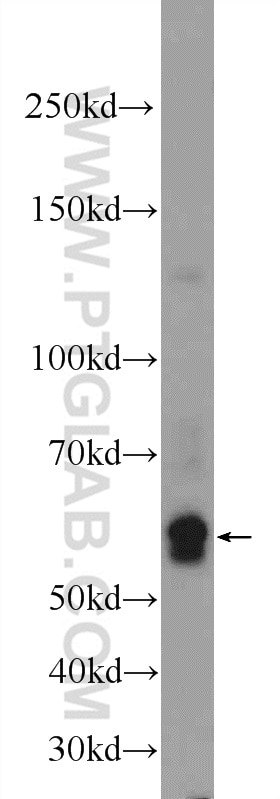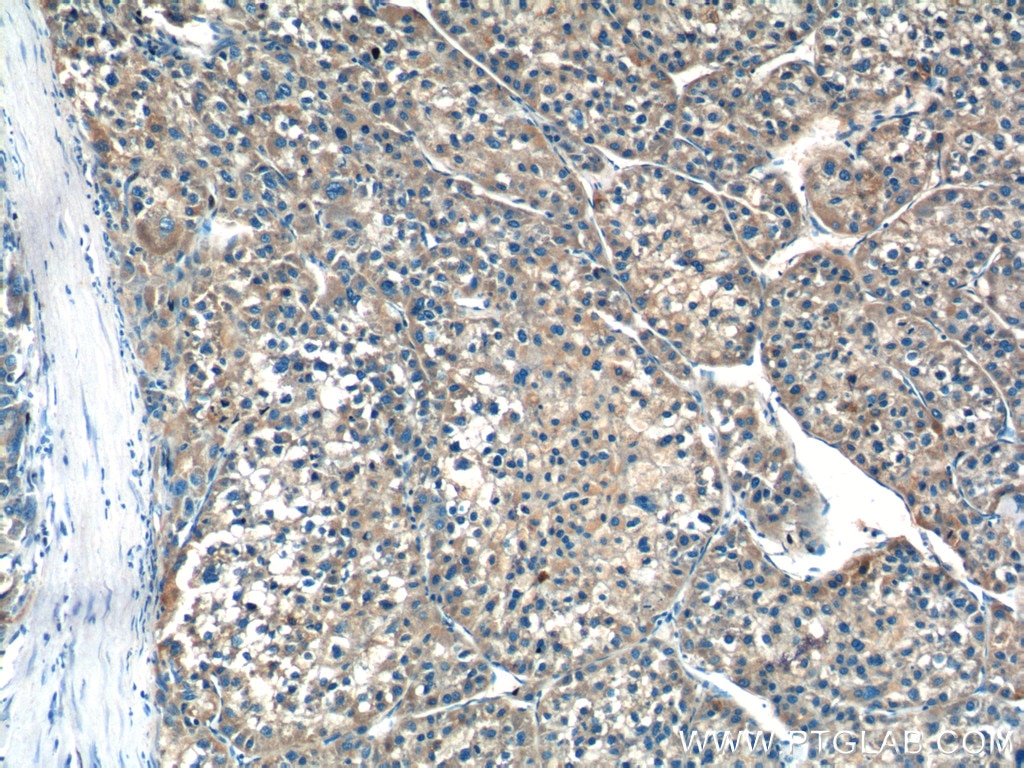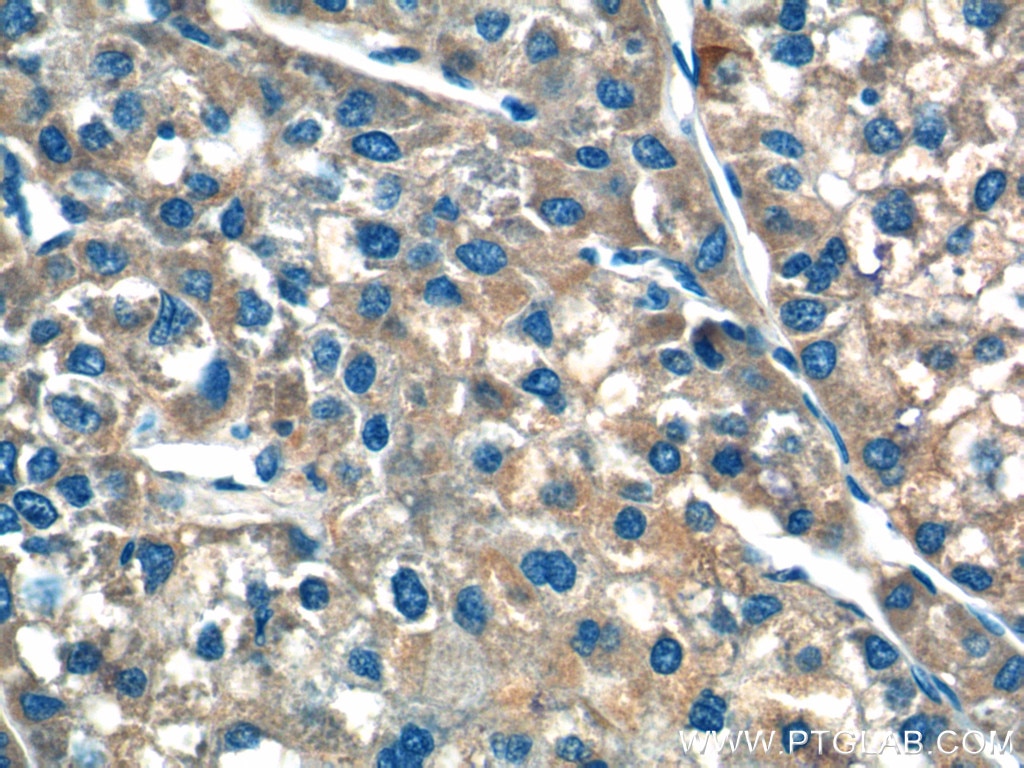- Phare
- Validé par KD/KO
Anticorps Polyclonal de lapin anti-Factor IX/PTC
Factor IX/PTC Polyclonal Antibody for WB, IHC, ELISA
Hôte / Isotype
Lapin / IgG
Réactivité testée
Humain et plus (2)
Applications
WB, IHC, IF, ELISA
Conjugaison
Non conjugué
N° de cat : 21481-1-AP
Synonymes
Galerie de données de validation
Applications testées
| Résultats positifs en WB | cellules HepG2 traitées à la tunicamycine |
| Résultats positifs en IHC | tissu de cancer du foie humain il est suggéré de démasquer l'antigène avec un tampon de TE buffer pH 9.0; (*) À défaut, 'le démasquage de l'antigène peut être 'effectué avec un tampon citrate pH 6,0. |
Dilution recommandée
| Application | Dilution |
|---|---|
| Western Blot (WB) | WB : 1:500-1:1000 |
| Immunohistochimie (IHC) | IHC : 1:50-1:500 |
| It is recommended that this reagent should be titrated in each testing system to obtain optimal results. | |
| Sample-dependent, check data in validation data gallery | |
Applications publiées
| KD/KO | See 2 publications below |
| WB | See 3 publications below |
| IF | See 1 publications below |
Informations sur le produit
21481-1-AP cible Factor IX/PTC dans les applications de WB, IHC, IF, ELISA et montre une réactivité avec des échantillons Humain
| Réactivité | Humain |
| Réactivité citée | Humain, porc, souris |
| Hôte / Isotype | Lapin / IgG |
| Clonalité | Polyclonal |
| Type | Anticorps |
| Immunogène | Factor IX/PTC Protéine recombinante Ag15723 |
| Nom complet | coagulation factor IX |
| Masse moléculaire calculée | 461 aa, 52 kDa |
| Poids moléculaire observé | 56 kDa |
| Numéro d’acquisition GenBank | BC109215 |
| Symbole du gène | F9 |
| Identification du gène (NCBI) | 2158 |
| Conjugaison | Non conjugué |
| Forme | Liquide |
| Méthode de purification | Purification par affinité contre l'antigène |
| Tampon de stockage | PBS with 0.02% sodium azide and 50% glycerol |
| Conditions de stockage | Stocker à -20°C. Stable pendant un an après l'expédition. L'aliquotage n'est pas nécessaire pour le stockage à -20oC Les 20ul contiennent 0,1% de BSA. |
Informations générales
The F9 gene encodes coagulation factor IX, which circulates as an inactive zymogen until proteolytic release of its activation peptide allows it to assume the conformation of an active serine protease. Its role in the blood coagulation cascade is to activate factor X (F10) through interactions with calcium, membrane phospholipids, and factor VIII (F8). Factor IX and factor X both consist of 2 polypeptide chains referred to as the L (light) and H (heavy) chains. The H chain bears a structural resemblance to the polypeptide chain of the pancreatic serine protease trypsin (PRSS1). The L chain is covalently linked to the H chain by a single disulfide bond.
Protocole
| Product Specific Protocols | |
|---|---|
| WB protocol for Factor IX/PTC antibody 21481-1-AP | Download protocol |
| IHC protocol for Factor IX/PTC antibody 21481-1-AP | Download protocol |
| Standard Protocols | |
|---|---|
| Click here to view our Standard Protocols |
Publications
| Species | Application | Title |
|---|---|---|
EMBO Mol Med CRISPR/Cas9-mediated somatic correction of a novel coagulator factor IX gene mutation ameliorates hemophilia in mouse. | ||
Front Neurosci Serum Exosomal Proteins F9 and TSP-1 as Potential Diagnostic Biomarkers for Newly Diagnosed Epilepsy. | ||
Cell Death Dis Genome wide CRISPR/Cas9 screen identifies the coagulation factor IX (F9) as a regulator of senescence.
| ||
Vet Res TRIM28 regulates the coagulation cascade inhibited by p72 of African swine fever virus
|




